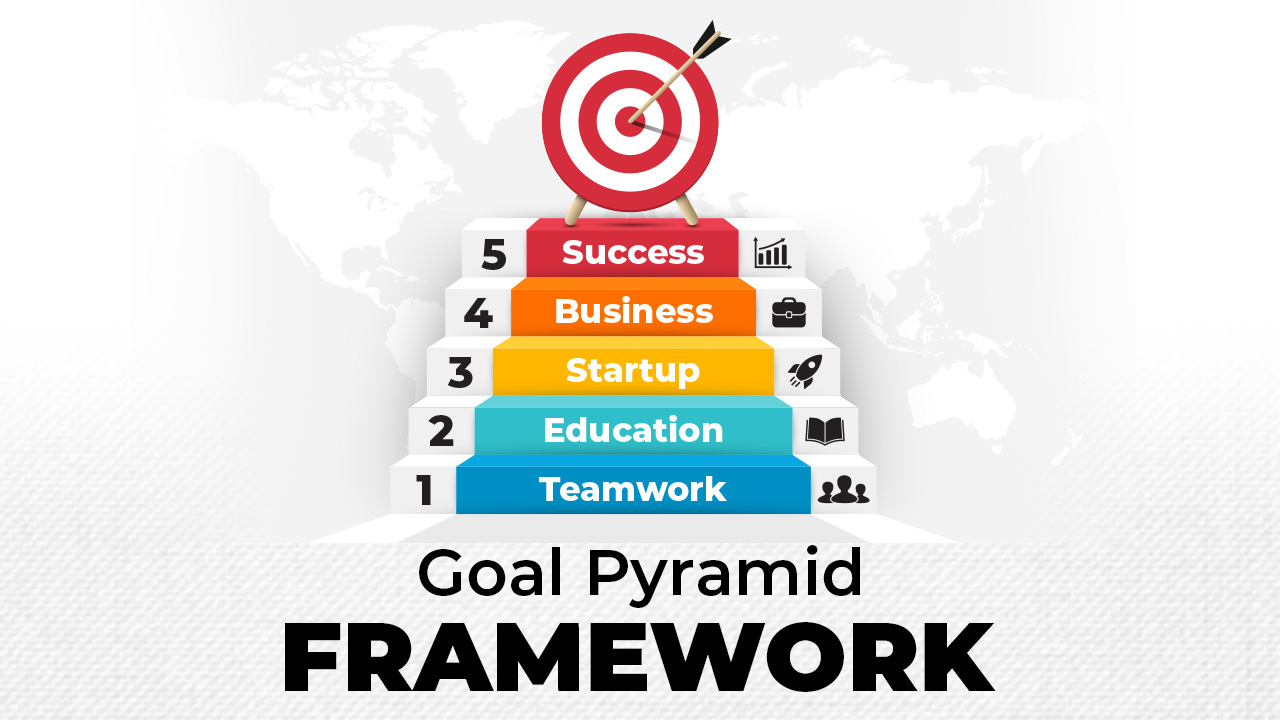Goal setting is crucial for both businesses and individuals to achieve success. However, without a structured framework, reaching goals can seem overwhelming. This is where the Goal Pyramid Framework proves invaluable. It breaks down goals into manageable steps, making it easier to visualize and attain desired outcomes.
In this article, we'll delve into the Goal Pyramid Framework and its categories to illustrate how it can benefit your business.
What is the Goal Pyramid?
The Goal Pyramid is a practical method for deconstructing goal-setting aspirations into tangible and achievable steps. It facilitates easy visualization and materialization of objectives, providing methods to track progress effectively. The Goal Pyramid comprises four categories: primary goals, long-term goals, short-term goals, and daily habits.
Visualise to Materialise
Goal Pyramid Framework:
- Primary Goals:
Primary goals form the foundation of the Goal Pyramid, encompassing the overarching aspirations of the business. These are the ultimate wishes or objectives that a business seeks to achieve, impacting its growth parameters. Initial fulfillment of primary goals serves as motivation to pursue further objectives. Examples include aspiring to become an author or initiating a new business venture.
- Long-term Goals:
Long-term goals break down primary goals into actionable steps. For instance, aspiring to become an author involves milestones such as drafting, editing, and completing the manuscript. These incremental achievements contribute to realizing larger objectives.
- Short-term Goals:
Short-term goals further dissect long-term goals into manageable segments. For example, to achieve the long-term goal of becoming an author, setting weekly targets for drafting a specific number of pages facilitates progress.
- Daily Habits:
Daily habits constitute the final tier of the Goal Pyramid. These habits comprise specific and actionable steps aligned with long-term goals. For instance, while pursuing authorship, daily habits may include dedicating an hour to research and 30 minutes to writing.
Note: Daily habits are adaptable to time and individual preferences.
In conclusion, the Goal Pyramid Framework offers a practical approach to achieving your business objectives. The four-tier structure- primary goals, long-term goals, short-term goals, and daily habits, provides a roadmap for success. By breaking down your goals into achievable steps, businesses can monitor progress, and make necessary adjustments.
Remember, every small step contributes to significant progress, and by following the Goal Pyramid Framework, you can transform your business dreams into reality.



















